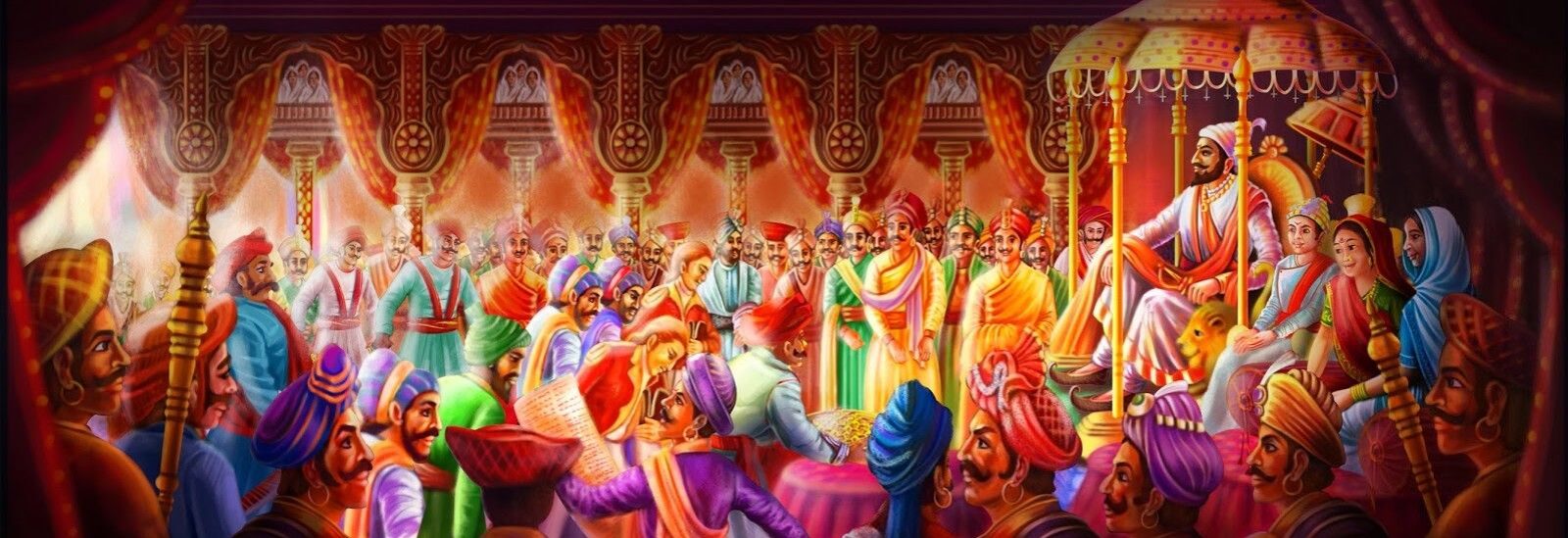Continue reading from Part VII
Granaries / Ambarkhana (धान्य कोठारे / अंबरखाना):
A place to store grain. These warehouses were built in such a way that there would be no nuisance from mice, insects, ants and rain. A building built for storing grain was called Ambarkhana.
Ammunition Stores (दारू कोठारे):
A place for storing ammunition for cannons and other weapons. The ammunition stores were mostly away from the main residence.
In this regard, Maharaj says that,
‘‘…दारूखाना घराजवळ घराचे वारियाखाले नसावा. सदरेपासून सुमारांत जागा पाहून भोवते निर्गुडी आदिकरून झाडाचे दाट कुसूं घालून बांधवा. तळघर करावे तळघरात गच्च करावा. तंत माच घालून त्या घरी दारूचे बस्ते, मडकी ठेवावी. बाण होके आदि करून मध्यघरात ठेवावे. सरदी पावे न द्यावी. आठ पंधरा दिवसी हवालदाराने येऊन दारू, बाण, होके आदि करून बाहेर काढून उष्ण देऊन मुद्रा करून ठेवीत जावें. दारूखान्यास नेहमी राखणेस लोक ठेवावे. त्यांनी रात्रंदिवस पाहरियाप्रमाणे जागत जावें. परवानगी विरहित आसपास मनुष्य येऊ न द्यावे….’’
Translation:
“… ammunition store should not be close to the house or nearby the house. After seeing the space far from Sadara, make compound of cactus from all sites build a ammunition store, make a circle around it and tie it by adding thick pieces of wood. The basement should be build and tiled. Put a string match and keep ammunition baskets and pots. Arrows and hooks etc. kept in the middle part of ammunition store. Do not allow cold feet. After eight to fifteen days, the constable should come and take out the ammunition, arrows, hook etc. He should make them warmed then tally them and kept them inside the store room again as it is. Always have guards to maintain and security of ammunition store. They should stay awake day and night like a watchman. Do not allow people to come around without permission.
Khalbatkhana (खलबतखाना):
A protected space for secret discussions.
Armory (शस्त्रागार):
A place to store all weapons.
Garments (वस्त्रागार):
A place to keep all kinds of royal robes.
Depository / Treasury (जवाहिरखाना / कोषागार):
A place to keep valuables.
Office (दफ्तरखाना):
A safe place to store all types of ongoing business, correspondence, private documents, historical documents, records and other documents.
Mint (टाकसाळ):
Taksaal is a factory for making daily currency like coins, stamps etc. From the time of coronation, Maharaj started Taksaal at Raigad. There were 32 types of gold coins in Maharaj’s treasury. Also there were 6 types of silver coins. Apart from gold coins, silver and copper coins were minted in Raigad mint. Shivarai and Hon were the precious coins of Swarajya. The mint was only at Raigad.
Continue reading with Part IX
or goto Part I, Part II, Part III, Part IV, Part V, Part VI, Part X, Part XI


Pingback: Elements of Fort (Part IX) – Chatrappati Blogging
Pingback: Elements of Fort (Part III) – Chatrappati Blogging
Pingback: Elements of Fort (Part IV) – Chatrappati Blogging
Pingback: Elements of Fort (Part I) – Chatrappati Blogging
Pingback: Elements of Fort (Part V) – Chatrappati Blogging
Pingback: Elements of Fort (Part VII) – Chatrappati Blogging